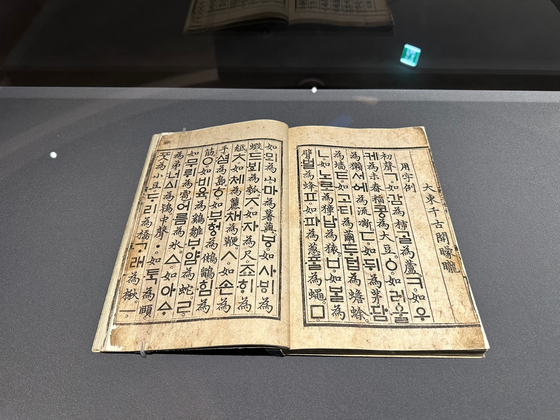The Alphabet of Korea, Hangul [Photo Essay Contest]

The Korea JoongAng Daily hosted its first photo essay contest for elementary, middle and high school students on the theme: “Promote the beauty of Korea to foreign countries." The contest ran from October to November. Photos containing scenes of traditional culture, family love, places to see and tasty treats in Korea were submitted for the contest.
For people who participated but didn't win a prize:
Hajoon Rhee from Seoul Academy International School submitted the following photo essay as a elementary school-level entry.
There is an alphabet in Korea, made from the kingdom of Choson, the country in Korean history. The alphabet has the cultural beauty and history of Korea. Hangul, the alphabet in Korea, is only the alphabet that was created. I like Korean history, and I think the most significant part of it is the creation of Hangul.
This picture is the Hunminjeongeum Haeryebon. Hunminjeongeum was the name of Hangul when it was made. The Hunminjeongeum Haeryebon is the book about how Hangul, or Hunminjeoungeum at the time, was created. When King Sejong was the king of Korea, most people had problems understanding the Chinese character. The Chinese character is an ideogram, for which people must memorize all the meanings and pronunciations. It was so hard to memorize. But Hangul is a phonogram. We can just memorize the sounds of it. Also, people didn’t have to memorize thousands of words to write; they used Hangul. Since most people had problems understanding the Chinese character, King Sejong, the creator of the Hunminjeoungeum, made his scholars make a book to teach the people Hangul. The Haeryebon was made by the scholars as teaching tools. The Haeryebon serves as a teaching tool for the creation of Hunminjeoungeum and functions similarly to a textbook informing reader about the subject. Because of this, Hunminjeongeum, also known as Hangul, is the only character that was not invented by someone else.
People needed to read at that time because they had to get the notifications that the King gave them. If people wanted to be part of the government in the Choson Dynasty, they had to know how to read and write. But Chinese was hard to memorize. So King Sejong made the Koreans’ new alphabet, Hunminjeongeum. Hunminjeongeum was easier to read because the alphabet is how we should pronounce it. King Sejong also made the Haeryebon so that he could help the people read better. It means that the shape that we should read is the appearance of the letter. There is a difference between the impact of Hangul in the past, during the Choson Dynasty, and nowadays. It didn’t have much impact in the past since the word was so easy, but to look at people at a high level, people at that time used the harder Chinese character. Nowadays, Koreans only use Hangul. Hangul has a great impact on the digital world since it’s easy to type. For example, the dubeolsik way to type on the computers makes the vowels go to the right and the consonants go to the left. On phones, there are fewer keys to click, which makes it easier with the cheon-ji-in and the naratgul typing methods.
In conclusion, the alphabet in Korea, Hangul, was from Hunminjeongeum, which King Sejong made. It has special characteristics, such as being the only alphabet that was created by someone. The alphabet makes Korea a unique country too. Koreans are proud of it, and even Haeryebon is one of the UNESCO Memories of the World. There are many other characteristics for Korean characters, too. People say it’s easy to learn, according to the Hangul Museum.
By Hajoon Rhee, Seoul Academy International School










with the Korea JoongAng Daily
To write comments, please log in to one of the accounts.
Standards Board Policy (0/250자)